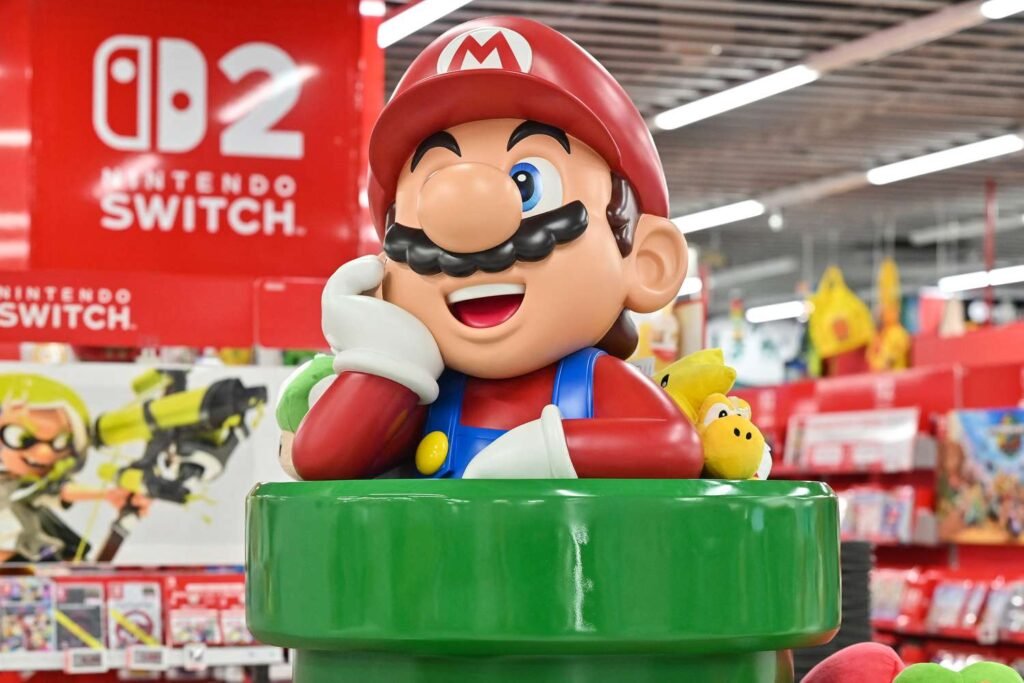:max_bytes(150000):strip_icc():format(jpeg)/GettyImages-2217743482-4911f849a5fb47cb9f43abdbfba1cd09.jpg)
Nintendo Co., Ltd.’s (NTDOY) newly released Switch 2 got off to a record start—3.5 million units flew off shelves in the first four days after its June 2025 launch, the fastest hardware debut in company history. At $449.99, the hybrid console adds a brighter 7.9-inch HDR screen and 120 Hz variable-refresh support, yet it still trails rivals in terms of raw performance.
That performance gap is no accident. For decades, Nintendo has prospered by sidestepping the semiconductor arms race and shipping “good enough” technology wrapped in playful design and beloved intellectual property.
Key Takeaways
- “Good enough” hardware lowers costs, enlarges margins, and expands the addressable market.
- Design constraints spur signature innovations—from Wii motion controls to Switch hybrid play.
The Power of “Good Enough” Tech
Gunpei Yokoi, architect of the Game Boy, coined Nintendo’s guiding mantra: “lateral thinking with withered technology,” meaning the company should creatively reuse mature, cheap components.
The 2006 Wii embodied the idea, recycling modified 2001-era GameCube silicon that cost a fraction of Sony’s PS3 chip set. Yet, its motion-sensing novelty, lower price point, and familiar game library turned it into one of the generation’s bestsellers.
Lean hardware bills translate directly into profits. In fiscal year 2024, while competitors subsidized bleeding-edge consoles, Nintendo generated ¥1.7 trillion (about $11.5 billion) in revenue and ¥529 billion ($3.6 billion) in operating income on aging models like the Switch 1, achieving an industry-leading margin of 30% or more.
Cheap-to-build consoles allow the company to price aggressively, weather currency swings, and maintain a robust research and development budget and share buyback strategy. In short, “good enough” hardware has proved more than good—it has been quite lucrative.
How Nintendo Turns Limitations Into Innovation
Technical restraint thus forces Nintendo’s engineers to surprise players in other ways. The DS doubled number of screens rather than pixel count; the Wii Remote turned a low-power box into a living-room sports phenomenon; and the original Switch fused handheld and TV play without chasing 4K.
Each flourish sprang from within the boundaries of modest specs. Switch 2 follows suit: instead of ray-tracing dominance, it offers backward compatibility, Joy-Con 2 haptics, and a 4K-capable dock that unlocks value in existing game libraries.
The result is a virtuous loop: accessible hardware invites a broader demographic, bigger install bases lure developers, and expansive software catalogs prolong console life cycles—often several years or more—extracting outsize return from every transistor.
Why Investors May Have Misread the Gaming Market
Because Wall Street often equates technological leapfrogging with market performance, Nintendo shares have periodically traded at discounts whenever specs looked dated. Ahead of Switch 2’s debut, the company even cut its 2025 outlook, citing waning demand—and the stock slipped. Yet record demand then forced analysts to lift revenue targets to just under ¥2 trillion (about $13.57 billion), underscoring how quickly sentiment can swing when Nintendo unleashes a fresh idea built on proven tech.
Meanwhile, royalties from films, toys, theme parks, and mobile apps added ¥92.7 billion (about $630 million) to fiscal year 2024 revenue, cushioning hardware volatility and highlighting the unrealized value of Nintendo’s intellectual property.
In other words, spec sheets don’t capture intangible moats or the pop-culture flywheel that lets Mario sell consoles, and vice versa.
Applying Nintendo’s Strategy to Your Portfolio
What can individual investors learn?
- Remember that “best” technology is not always synonymous with “best” business. Companies that leverage mature, even depreciated tech can still enjoy superior margins and faster payback periods.
- Seek firms that pair frugal engineering with distinctive customer experiences—whether through iconic brands, network effects, or ecosystem lock-in.
- Monitor optionality: Nintendo’s expansion into film, streaming, and theme parks turned familiar characters and games into multichannel cash flows, lowering portfolio exposure to any single hardware cycle.
- Resist knee-jerk reactions to specification hype. Ask instead whether a management team has a track record of delighting users while monetizing seasoned technology.
The Bottom Line
Nintendo continues to prove that fun, not frame rate, drives sales and profits. By marrying mature components with inventive design and evergreen IP, the company again turned technical humility into commercial dominance, and investors who looked beyond specs have shared in the bounty.
As Switch 2’s launch attests, sometimes “good enough” is a billion-dollar strategy.

